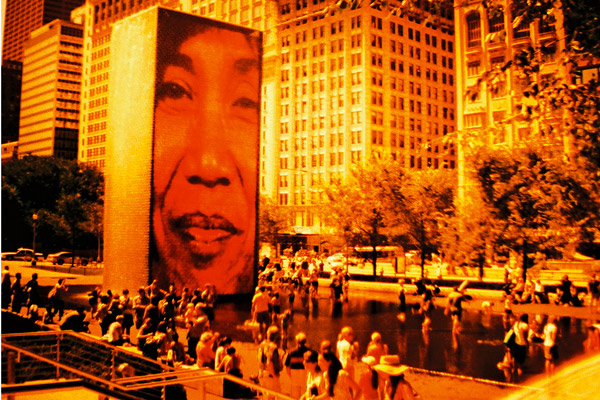
* At ChicagoSide, Ben Strauss talks with the great Chicago photographer Art Shay. You're perhaps familiar with his photographs of Nelson Algren, Simone de Beauvoir, JFK, the 1968 protests, and so forth. Less well-known? His racquetball photography, including "the greatest racquetball photograph ever taken."
Racquetball—originally called “paddle racquets”—was invented in 1949. When the game was young, Shay’s photographs, including 30 cover photographs for Racquetball Magazine, were critical in helping the game find a wider audience.
* Previously, Strauss profiled the fastest man in Major League Soccer, the Fire's Dominic Oduro, a striker who runs a 4.3 40.
* In the Boston Review, Anne Fausto-Sterling has a great piece on race and health care, which touches on Chicago and the fact that in the past three decades, the rate at which white women die of breast cancer has gone from about the same as that of black women to half that. In other words, great progress has been made in the detection and treatment of breast cancer in white women, but very little has been made for black women. Dorothy Roberts, a Northwestern Law prof and author of Fatal Invention: How Science, Politics, and Big Business Re-create Race in the Twenty-first Century, sees access as a central problem:
Women of color living in segregated neighborhoods have limited access to mammograms, sometimes having to travel on public transportation up to ten miles away, only to be told that their health insurance won’t cover the screening. Adding injury to insult, the quality of available mammograms is poor compared to what’s offered at the state-of-the-art facilities more commonly accessible to white women. Whitman cites a North Lawndale facility that catches only two cancers per thousand people screened, rather than the expected six.
Fausto-Sterling also looks at research being done at the University of Chicago on stress and illness:
Olopade has teamed up with University of Chicago biopsychologist Martha McClintock to ask a new kind of question. In a study of mice that primarily modeled the growth rate for human breast cancer, they have shown that socially stressed mice express certain genes differently in their mammary tissue. Specifically, the stressed mice demonstrate an uptick in expression for suites of genes involved in lipid metabolism and a biochemical pathway that converts sugars into energy. Both pathways contribute to breast cancer growth.
McClintock has been studying stress and its effects on the body for years.
* Dan Grzeca, one of my favorite local illustrators, is doing a super-tube sale of posters.
Photograph: kevin dooley (CC by 2.0)


